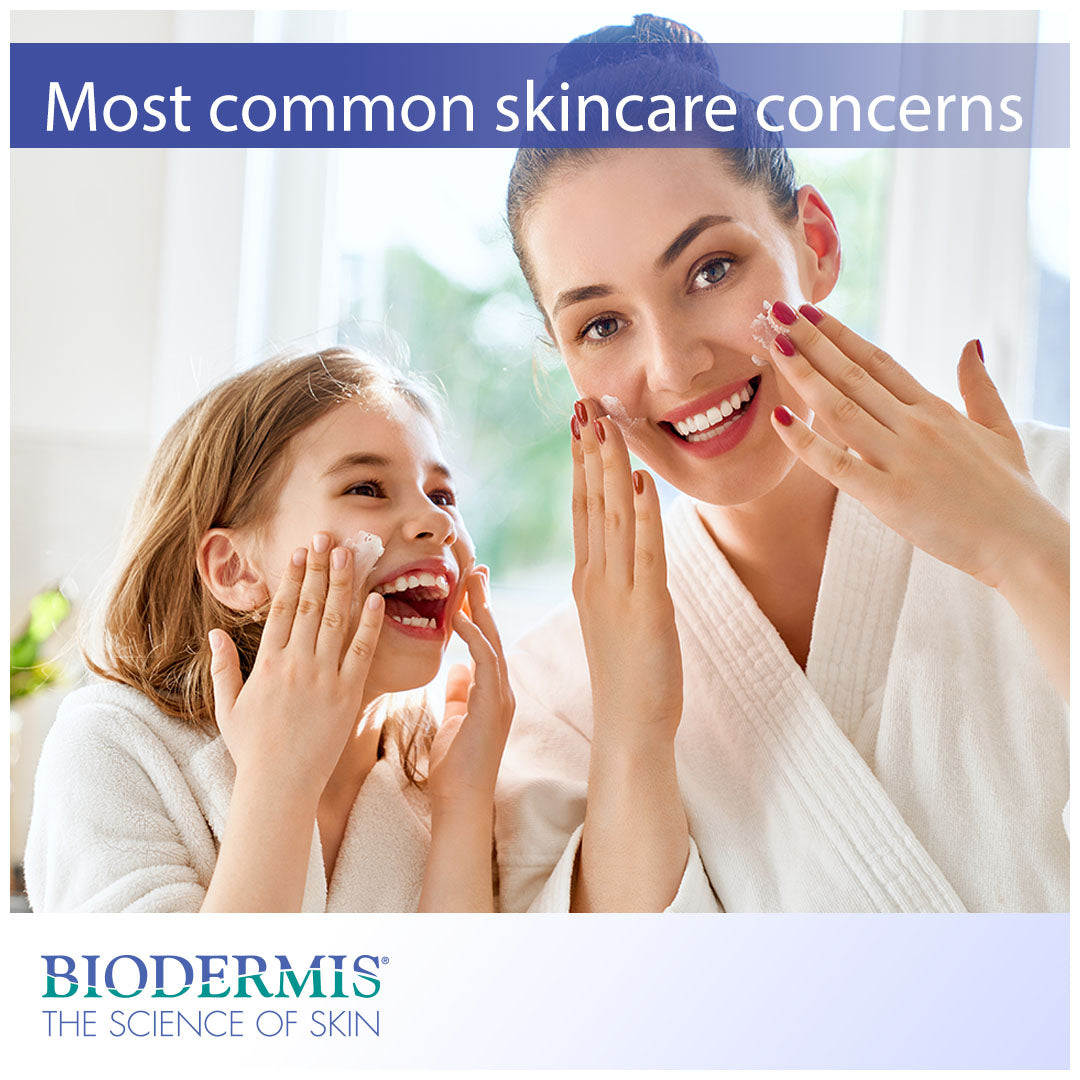Over the past few years, the skincare and cosmetics industry has grown tremendously, targeting the needs of a diverse population with new concerns. These concerns often range in severity, from moderate to severe. The more severe problems should be examined by a dermatologist, but some over the counter remedies may be available to allay certain symptoms. Furthermore, much of what the consumer skincare market offers to the public are solutions for purely cosmetic issues, not ones that require urgent care and prescription medication. However, depending on what your specific concerns and needs are, you may be surprised what remedies are available to consumers.
Continue reading to learn more about the most common skincare concerns and what you can do about them.
Continue reading to learn more about the most common skincare concerns and what you can do about them.
Dry and cracked skin
Dry and cracked skin occurs most commonly for people who live in dry climates. Certain things you can do to induce moisture into your environment include using a humidifier indoors or taking cold showers. Drinking plenty of water and consistently using a moisturizer is also incredibly important to help with dry, cracked skin. Apart from a dry climate, age is another known culprit of dry skin. As we age, the collagen and elastin fibers in our skin break down and lead to a loss of integrity in our skin’s natural ability to retain moisture. Dry and cracked skin is not a serious problem, but it could be a sign that you are dehydrated and need to include more liquids in your diet.Undereye bags and dark circles
Undereye bags and circles are common problems that often result from not getting enough sleep or from aging. Physiologically speaking, bags form under the eyes as a result of weakened, sagging skin, which occurs more as we age. These bags are more noticeable after we wake up from sleeping because excess fluids from the body can pool near the eyes as we sleep. Usually, undereye bags and circles are purely cosmetic concerns that don’t require medical attention.Rosacea
Also known as acne rosacea, is a common skin disorder that affects nearly 3 million people in the US every year. The condition causes redness and small, red, pus-filled bumps on the face. Most often, rosacea affects fair-skinned, middle-aged women, but children can also be affected. In fact, if rosacea is left untreated in children, it can lead to permanent redness in the middle of the face. Rosacea isn’t harmful to one’s health and treatment included antibiotics and anti-acne creams.Contact dermatitis
Contact dermatitis is a skin rash that is caused by contact with certain substances or objects. The substance may irritate the skin or cause an allergic reaction. Certain types of fabrics, soaps, cosmetics, jewelry, and other common items are known to be the main culprits of dermatitis. A dermatitis rash is usually red with itchiness or swelling. In some cases, the rash can be painful. The best way to avoid contact dermatitis is to limit contact with the objects or substances that caused the rash. Common treatments for contact dermatitis include creams, cold compression, steroids, and antibiotics.Acne
Acne, also known as acne vulgaris, is one of the most common skincare problems that affects teens and young adults with the onset of puberty. Acne occurs as a result of hair follicles being congested with oils and dead skin cells. Acne expresses itself as blackheads, whiteheads, pimples, oily skin, and scarring. The parts of the body mostly affects by acne include the face, back, and chest. Most acne will go away on its own over time. The best at-home remedies include washing the face and body, and using moisturizers that don’t clog pores. In more serious cases, a dermatologist will recommend anti-inflammatory creams and antibiotics.Scars
Scars are another skin care concern that many people have, particularly after a surgery or injury. The most aggressive scar types, and the types that people want to avoid, include keloids and hypertrophic scars. These scar types are marked by their raised, ropey, and discolored appearance. The best way to treat scars is to use clinically-proven methods and doctor-recommended therapies, such as medical silicone gel. Silicone gel works by inducing hydration at the scar site to signal to the body to cut down on collagen production in that area. When collagen levels go down to a normal level, scars will respond by flattening and turning a normal color.Biodermis is an innovative market leader with 30 years of expertise in the medical silicone industry. Visit Biodermis.com today to explore a complete range of scar management and post-operative care solutions.
PHYSICIANS AND MEDICAL PROFESSIONALS: REFER OR RESELL?
Biodermis offers custom tailored referral programs designed to simplify and reduce the cost of your patients' post-op care. Additionally, we offer professional pricing if you opt to retail our products. Give us a call at 800.322.3729, and we will be happy to provide additional details on these programs.





